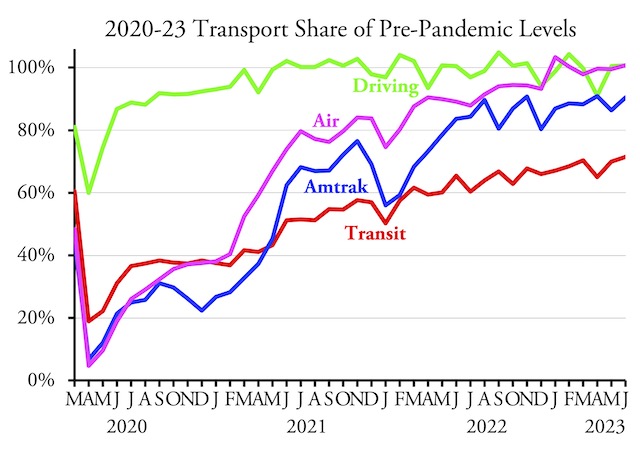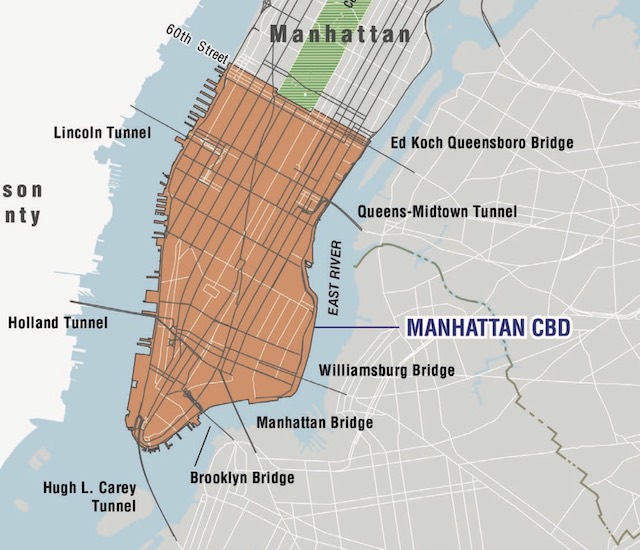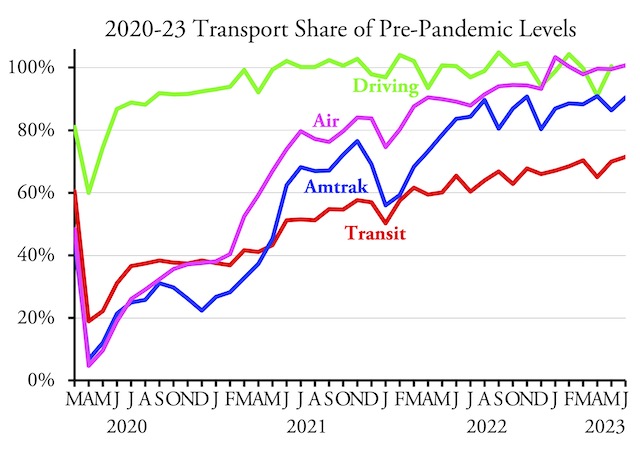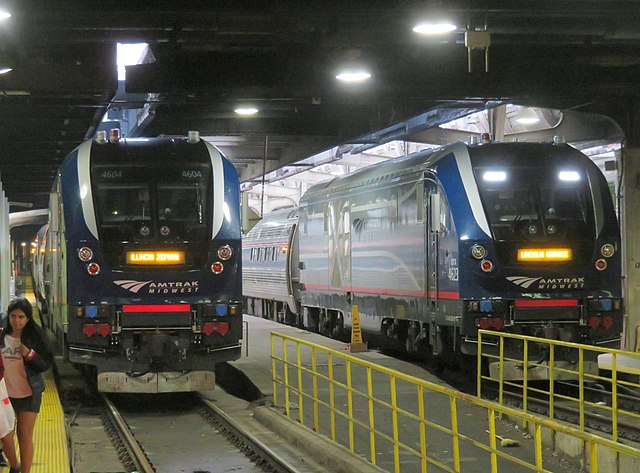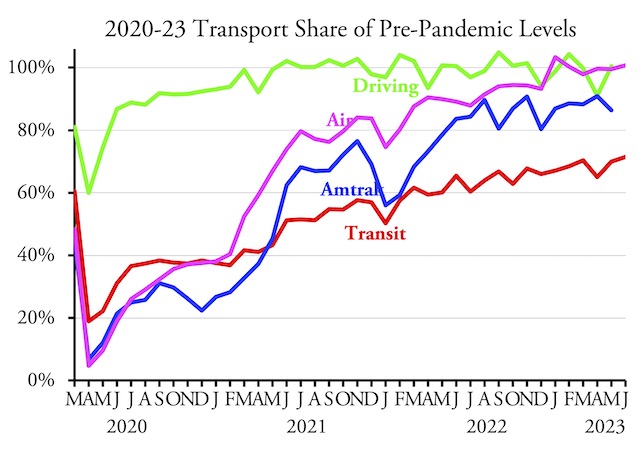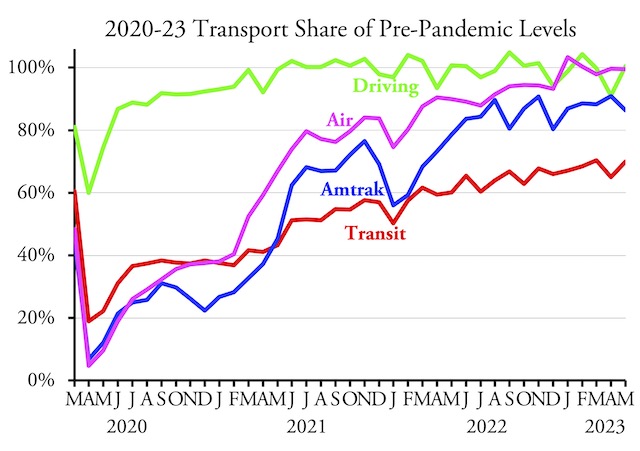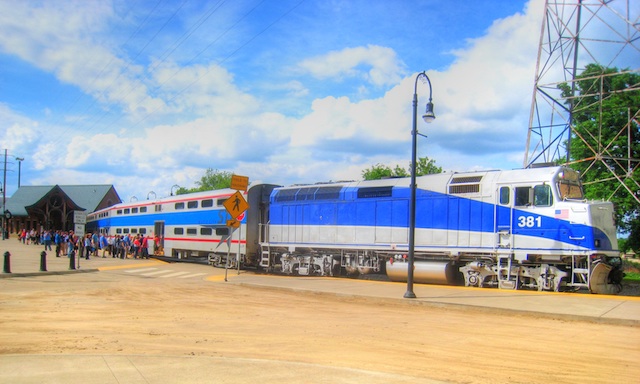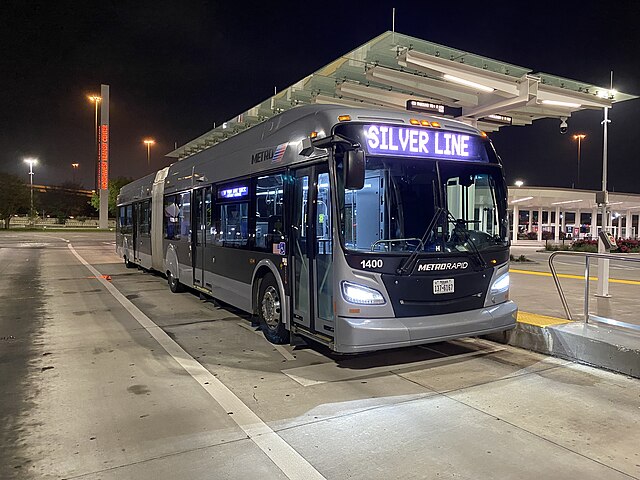Americans drove slightly more miles in June 2023 than they did in June 2019, according to data released yesterday by the Federal Highway Administration. Highway driving first reached 100 percent of pre-pandemic levels in June of 2021 and has been hovering around 100 percent ever since. In comparison, flying didn’t reach 100 percent until January of this year, while Amtrak has been hovering around 90 percent since August 2022 and transit has never exceeded 72 percent.
For a detailed discussion of Amtrak results, see last Tuesday’s post. For a detailed discussion of transit and airline results, see last Saturday’s post.
Urban driving was only 99.0 percent of pre-pandemic levels, but rural driving more than made up for it at 105.3 percent. Total miles of driving exceeded 2019 numbers in 27 states, with the biggest gains in Idaho (117%), Missouri (114%), Alaska (114%), Colorado (113%), Wyoming (112%), and Michigan (111%). Driving is still only 76 percent of pre-COVID levels in the District of Columbia and is also woefully short in Illinois (84%), Massachusetts (91%), Maryland (92%), California (93%), Hawaii (94%), Washington (94%), and Georgia (94%). Driving in all other states was at least 95 percent of 2019 miles. Continue reading

